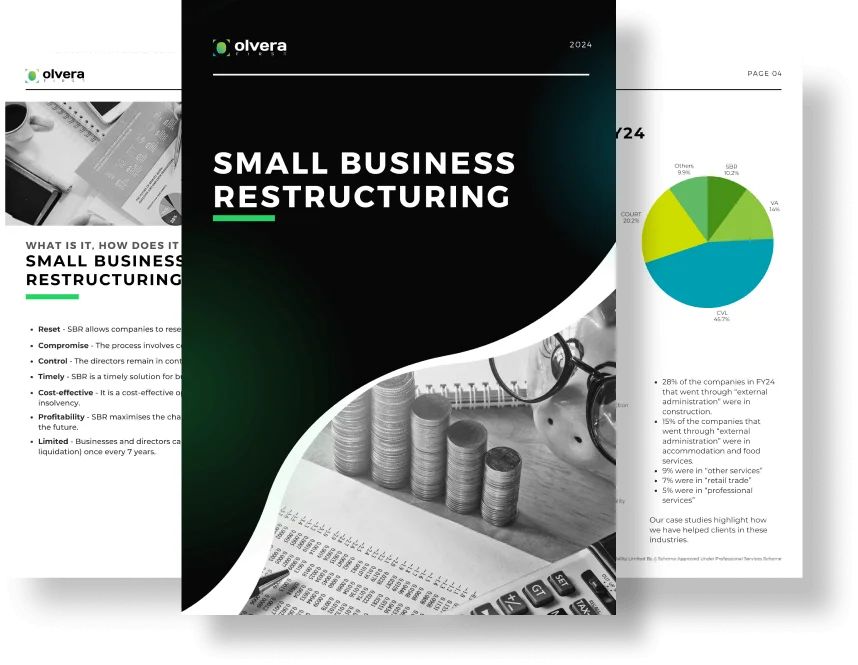If your business is profitable but weighed down by tax debt, a Small Business Restructure (SBR) can help you cut your debt, protect your assets, and stay in control, without shutting down.
Take the first step toward a clean slate.
A Small Business Restructure is a government-approved process that allows financially viable companies with debts under $1 million to reorganise and reduce what they owe.
It can:

Keep serving your customers and paying your staff.
Replace unmanageable demands with a plan that works.
Limit your personal exposure to company debt.
Stop the calls, letters, and looming threats from the ATO.

We make the SBR journey simple, structured, and stress-free — so you can focus on running your business while we handle the details.
Speak with our Small Business Specialists to learn about SBR and find out if you’re eligible for the program.
Once eligible. We will request a balance sheet, and match you with a Restructuring Practitioner.
Our SBR Practitioner works with you, your accountant and your business to build the right plan.
Once agreed, the Practitioner submits your plan to creditors for approval.
The plan is carried out, debts are paid, and you continue to run your business.
Our Small Business Restructuring process is relatively cost-effective compared to a voluntary administration of liquidation process.
Payable to engage an Olvera First Practitioner to create your SBR Plan.
Olvera First has helped small businesses across Australia manage their debt successfully. Here are some examples of our track record.
Debt owed by the business before the SBR process.
Debt owed by the business after the SBR process.
Total percentage of debt reduced using SBR.

Debt owed by the business before the SBR process.
Debt owed by the business after the SBR process.
Total percentage of debt reduced using SBR.

Debt owed by the business before the SBR process.
Debt owed by the business after the SBR process.
Total percentage of debt reduced using SBR.

Debt owed by the business before the SBR process.
Debt owed by the business after the SBR process.
Total percentage of debt reduced using SBR.


Get answers to common questions about Small Business Restructuring.
The Australian Bureau of Statistics (ABS) defines a small business as a business employing fewer than 20 people. Categories of small businesses include:
A company is insolvent once it is not able to pay all the company’s debts when they become payable.
Warning signs that a company is insolvent include
To be eligible for the Small Business Restructuring process, your business must:
To understand you eligibility, take our SBR eligibility test.
A Small Business Restructuring Practitioner, like Olvera First, oversees the debt restructuring while the company directors remain in control of the business. The Small Business Restructuring Practitioner assists the company to:
The practitioner must also certify to supplier that they believe the company is eligible for restructuring, and that the company is likely to be able to meet its obligations under the plan. They must take reasonable steps to verify this. Once a plan is made, the small business restructuring practitioner manages the disbursement of payments to the company’s creditors based on the terms set out in the plan.
All unsecured debts (debt that does not have any collateral attached) which were incurred prior to the company entering restructuring may be included in the small business restructuring plan.
The exception is employee entitlements (including those not yet payable, like leave or redundancy entitlements), which are not included in the plan.
Debts incurred after the company enters restructuring are not part of the plan and must be paid off outside of the plan.
When a company enters into restructuring, a moratorium is applied on unsecured creditor claims and some secured creditor claims. This means:
The company must put a restructuring plan to its creditors within 20 business days of entering the process. The company’s Small Business Restructuring Practitioner can extend this period by up to 10 business days where an extension is reasonable in the circumstances. Once a plan is put to suppliers, they have 15 business days to vote to accept or reject the plan.